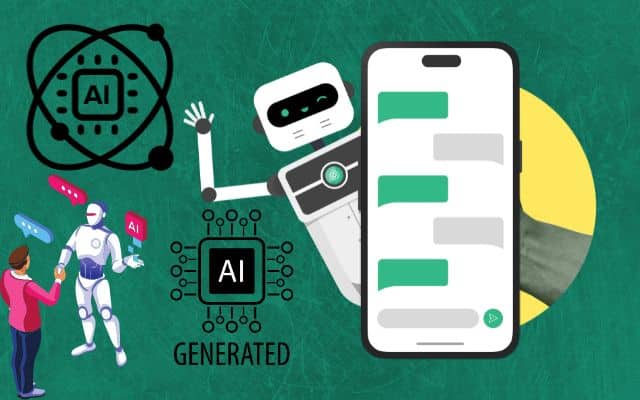What is ChatGPT, DALL-E, and Generative AI?

ChatGPT, DALL-E, and Generative AI are groundbreaking innovations in the world of artificial intelligence. In today’s fast-paced world, technology is advancing at a remarkable pace, offering us innovative solutions and tools that can change the way we live, work, and interact. Artificial intelligence (AI) is one such area that has gained significant attention. Within the realm of AI, we encounter fascinating creations like ChatGPT and DALL-E, both of which belong to the category of generative AI. In this article, we’ll explore what ChatGPT, DALL-E, and generative AI are and how they are transforming the landscape of technology and human interaction.
Understanding Generative AI
Generative AI, or Generative Adversarial Networks (GANs), is a subset of artificial intelligence that focuses on generating content that is often indistinguishable from human-created content. It works on the principle of using two neural networks – a generator and a discriminator – that compete against each other to produce and evaluate content, respectively.
The Generator: The generator’s role is to create content, such as text, images, or even music. It takes random noise or input and transforms it into meaningful data, which can be in the form of text, images, audio, or any other format. The better the generator becomes, the more convincing and realistic the content it produces.
The Discriminator: The discriminator’s job is to assess the content generated by the generator and distinguish it from human-created content. It provides feedback to the generator, enabling it to improve over time. As the discriminator becomes more skilled at recognizing fake content, the generator must work harder to produce convincing material.
The Competition: The generator and discriminator engage in a constant back-and-forth battle. The generator strives to create content that is as authentic as possible, while the discriminator attempts to identify the generated content as fake. This competition drives both networks to improve, resulting in the generation of increasingly realistic content.
Now that we have a basic understanding of generative AI, let’s delve into two remarkable examples: ChatGPT and DALL-E.
Related article: 5 best AI tools for taking meeting notes in 2023
Exploring the Wonders of ChatGPT, DALL-E, and Generative AI
ChatGPT: Conversational AI
ChatGPT is an advanced AI model developed by OpenAI. It falls under the category of generative AI and is specifically designed for generating human-like text and engaging in natural language conversations. ChatGPT’s capabilities include text generation, understanding context, answering questions, and even completing text prompts. Its main goal is to facilitate human-computer interactions that feel as natural as possible.
How ChatGPT Works
ChatGPT is built on a deep neural network architecture called a transformer. The model is trained on vast amounts of text data from the internet, allowing it to grasp the nuances of human language. It utilizes this knowledge to generate coherent and contextually relevant responses to user inputs.
ChatGPT’s input and output are text-based. Users can communicate with it by typing text or providing a text prompt, and the AI responds accordingly. The model uses context from the conversation to provide meaningful and relevant responses, making it seem like a genuine conversation with a human being.
Applications of ChatGPT
- Customer Support: Many businesses employ ChatGPT and similar models to automate their customer support services. It can answer frequently asked questions and assist customers with various inquiries, offering quicker response times and reducing the workload on human support agents.
- Content Generation: Content creators and marketers use ChatGPT to generate blog posts, articles, social media captions, and more. It can help save time and brainstorm ideas for content that resonates with the target audience.
- Language Translation: ChatGPT can translate text from one language to another, making it a useful tool for breaking language barriers and fostering global communication.
- Education: ChatGPT can be employed as a tutoring tool, helping students with explanations, answering questions, and offering guidance in various subjects.
- Creative Writing: Writers and authors use ChatGPT for inspiration, to overcome writer’s block, or to co-create stories and characters.
Related article: Transform Your Videos with AI: The 5 Best Tools for Effortless Video Editing
DALL-E: The Artistic AI
DALL-E is another remarkable creation by OpenAI, which pushes the boundaries of generative AI into the realm of visual art. DALL-E is designed to generate images from textual descriptions, making it a revolutionary tool for artists and creators.
How DALL-E Works
DALL-E utilizes a similar GAN-based architecture like other generative AI models. However, its specialty lies in image generation. Users input textual descriptions of what they want to see, and DALL-E interprets these descriptions to generate corresponding images.
For example, if you ask DALL-E to create a “giraffe made of sandcastles,” it can generate an image that precisely matches this description. The AI uses its vast training data to understand concepts, objects, and relationships between different elements, resulting in highly creative and often surreal images.
Applications of DALL-E
- Art and Design: DALL-E is a powerful tool for artists and designers looking to bring their imaginative concepts to life. It can quickly generate visual representations of their ideas, serving as a source of inspiration.
- Content Creation: Content creators can use DALL-E to produce eye-catching and unique images for various media, such as websites, social media, and marketing materials.
- Storytelling: Authors and storytellers can benefit from DALL-E’s ability to generate images that align with their narratives, adding visual depth to their storytelling.
- Prototyping: DALL-E can be used in design and engineering for quick prototyping by generating visual representations of products and concepts.
The Impact of Generative AI
Generative AI, as exemplified by ChatGPT and DALL-E, has had a significant impact on various fields and industries. Here are some key ways it has transformed the technological landscape:
- Creativity Amplification: Generative AI tools like DALL-E have empowered creators to explore new dimensions of their creativity. Artists and designers can generate innovative concepts and visualizations more easily.
- Efficiency and Automation: In customer support and content creation, ChatGPT has led to increased efficiency and automation. Businesses can provide quicker and more consistent responses, while content creators can streamline their workflow.
- Accessibility: Generative AI has made it easier for people with limited technical skills to engage in creative endeavors, such as art and design, by providing them with tools that can generate content based on their descriptions.
- Learning and Education: ChatGPT has been used as an educational tool, helping students learn and grasp complex concepts through interactive conversations and explanations.
- Global Communication: Language translation capabilities offered by ChatGPT facilitate communication and understanding between people who speak different languages, contributing to a more connected world.
Read More: 20+ Best Ideas for AI-based Products to Develop in 2024
Ethical Considerations
While the advancements in generative AI are exciting, they also raise ethical concerns. Here are some important considerations:
- Misinformation: The ability of generative AI to produce realistic content makes it susceptible to the spread of misinformation and fake news. Users must be vigilant and verify information from reliable sources.
- Bias: AI models like ChatGPT and DALL-E can inherit biases present in the training data, leading to unintended discriminatory or biased content. Efforts are being made to mitigate these issues.
- Privacy: Conversations and content generated by AI tools can raise privacy concerns, as they often involve sharing personal information. It is crucial to ensure that privacy is protected and data is used responsibly.
- Job Displacement: The automation of tasks in customer support and content creation may result in job displacement. It is essential to find ways to retrain and reskill the workforce to adapt to these changes.
The Future of Generative AI
Generative AI is an ever-evolving field, and its future holds immense potential. The following developments are what we can anticipate as technology develops:
- Improved Realism: Generative AI models like ChatGPT and DALL-E will become even more convincing and indistinguishable from human-created content, blurring the line between human and AI-generated output.
- Customization: AI models will become more adaptable and personalized, catering to individual preferences and needs, whether it’s in creative art or customer support.
- Enhanced Learning: Generative AI will play a more significant role in education, offering dynamic and interactive learning experiences for students worldwide.
- Ethical Advancements: Ethical considerations will be at the forefront of AI development, with increased efforts to reduce bias, ensure privacy, and combat misinformation.
Related article: Boost Your Academic Success with the Top 5 AI Tools for Students
Conclusion
Generative AI, as exemplified by ChatGPT and DALL-E, has transformed the landscape of technology and human interaction. These advanced models have the potential to revolutionize various fields, from art and design to customer support and education. However, as with any technology, there are ethical considerations that need to be addressed. The future of generative AI is promising, and its continued development will likely lead to even more exciting and impactful applications. As we move forward, it is essential to harness the power of generative AI responsibly, ensuring that it benefits society as a whole.







